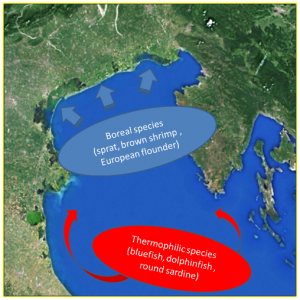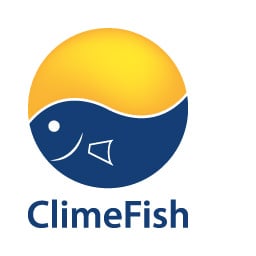C6 and 15 – The Adriatic Sea
Living on the edge with no escapes
The economic importance of fisheries and aquaculture
The Northern and Central part of the Adriatic Sea is a marine fishery and aquaculture case study of the of the ClimeFish project. The area considered comprises the Northern shallow flat platform (max depth 35 m) and the Central deeper (max depth 270 m) part. This area supports four main fisheries: an inshore artisanal fishery targeting mixed demersal resources (cuttlefish, mantis shrimps, flatfish and red mullets), an inshore dredging activity for the striped Venus clam, a mixed demersal fishery operating throughout the whole shelf area targeting a wide range of fish species (cuttlefish, octopuses, scallops, flatfish, hake and red mullet) and a pelagic fishery targeting small pelagic fish (sardine and anchovy). In 2013, these fisheries contributed for about € 150 million. Coastal aquaculture is mainly based on longline mussel farming, which contributes for about 2/3 of the national production.
Why climate change matters in this area
The northern Adriatic Sea basin is a semi-enclosed and shallow basin, exposed to cold north-easterly winds and receives cold waters from many alpine rivers that contribute to create a sub-Atlantic climate; therefore it hosts several species adapted to boreal conditions. Moreover, its position within the Mediterranean, makes the NAS a cul-de-sac for these species, preventing further poleward migration as a response to temperature rise.
How ClimeFish will tackle climate-related issues
Data analyses will be performed to assess and quantify how climate-induced changes in i) fish species distribution, ii) emergence of warm-water species and invasive species, and iii) demersal assemblage composition, iv) mussel growth performance. These data will be useful to better understand possible modification of the ecological processes and ecosystem functioning in the Adriatic Sea.

